A Zeiss 85mm f/1.4 weather-sealed lens for about a third the price of the Otus? Meet the new Milvus line!
posted Thursday, September 10, 2015 at 11:23 AM EST
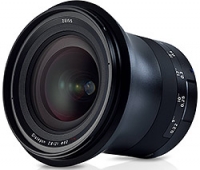
Following the new sleeker, streamlined design aesthetics of their earlier Otus family of lenses, Zeiss has unveiled a new series of SLR lenses, dubbed 'Milvus', for both Canon and Nikon full-frame cameras, which replace most of their earlier ZE and ZF SLR lenses. While the Otus lenses -- at only two models so far -- debuted one at a time, Zeiss is announcing their Milvus series all at once with a handful of new manual-focus lenses, ranging from an ultra-wide 21mm f/2.8 lens to a 100mm f/2 macro lens, with a 35mm f/2, a couple 50mm options, and an 85mm f/1.4 sitting in the middle for good measure.
All Zeiss Milvus-series lenses feature their trademark T* coatings for reduced flare and ghosting, an anodized metal barrel construction with a large, rubbery focus ring, and an included model-specific lens hood. The lenses, unlike the predecessor models, have been upgraded with full dust and weather sealing including a rubberized gasket around the lens mount.
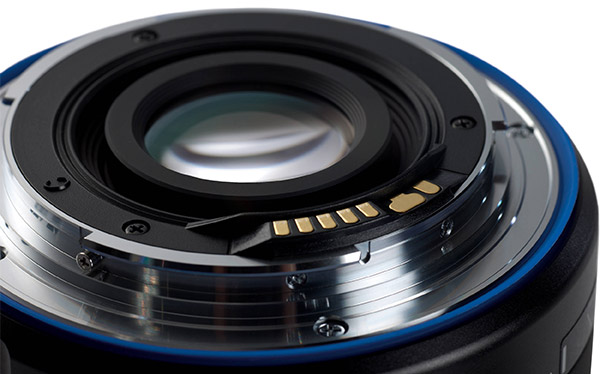
Astute readers may notice some rather curious overlapping between a couple new Milvus lenses and Zeiss' earlier Otus lenses. Indeed, the Zeiss Milvus 85mm f/1.4 and the Zeiss Otus 85mm f/1.4 offer the exact same focal length and aperture, and come in both Canon and Nikon flavors. Design-wise, they also sport striking similarities, with both using Zeiss' Planar design of 11 elements in 9 groupings and an aperture range from f/1.4 to f/16. The Milvus version sports seven elements made of special glass with anomalous partial dispersion to help combat chromatic aberration and improve clarity and sharpness. The Otus variant, on the other hand, adds a single aspherical element with six other anomalous partial dispersion elements to provide high image quality performance.
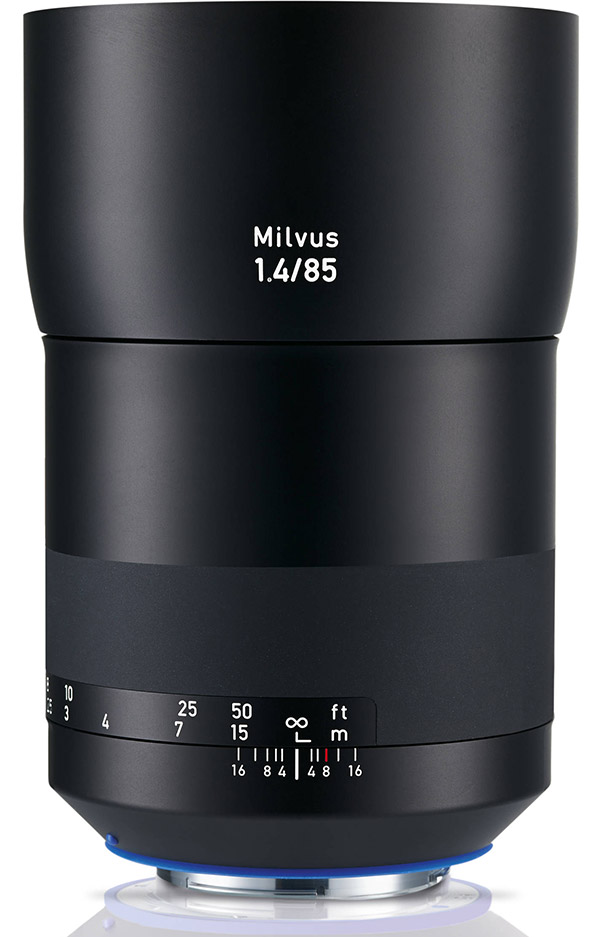
Of course, the biggest differences between the Otus lenses and the Milvus is price. Though the Milvus 85mm f/1.4 features a 77mm filter thread, while the Otus uses a whopping 86mm filter, both lenses weigh about the same at around 1200 grams. However, the Milvus 85mm f/1.4 is massively less expensive at around $1,800, while the Otus version breaks the bank at around $4,500.
Moving on.
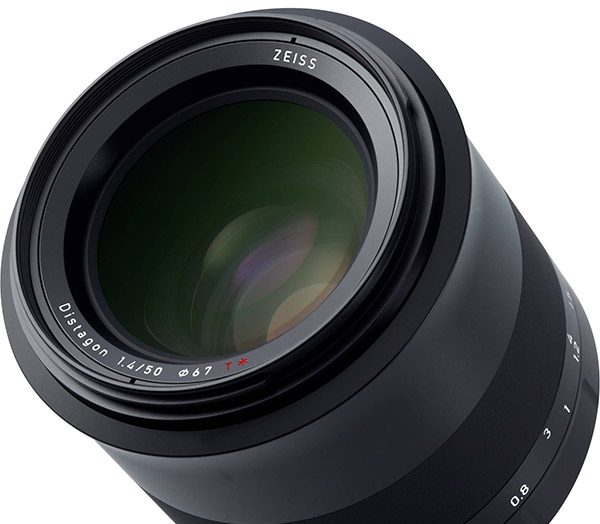
Zeiss also released a couple of 50mm lenses in their new Milvus series, an f/2.0 Macro lens and an f/1.4 standard option. As with the 85mm f/1.4, the Zeiss 50mm f/1.4 Milvus sits awfully close to the earlier Otus 55mm f/1.4 lens in terms of focal length, aperture and overall Distagon design. Again, however, the Milvus 50mm f/1.4 is designed differently, with 10 elements in 9 groups -- as opposed to 12 elements in 10 groups for the Otus. The 50mm f/1.4 Milvus uses four low dispersion elements and a single aspherical one to reduce CA and improve sharpness.
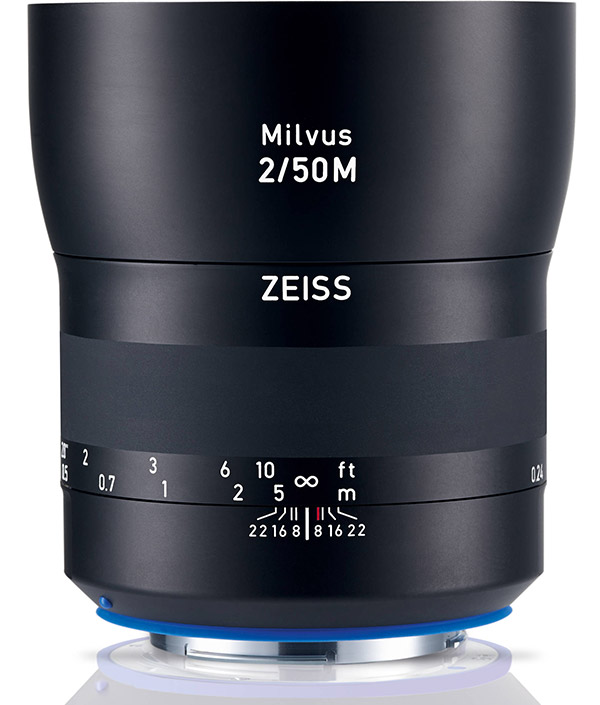
The Zeiss Milvus 50mm f/2, meanwhile, is a compact macro lenses that offers a 1:2 magnification ratio, just like its predecessor, the 50mm f/2.0 Makro-Planar. Thanks to the floating lens element design, the lens can maintain consistently high performance when working at close distances. Optically, the Milvus version appears very similar, if not the same, as its predecessor, with 8 lens elements in 6 groups.
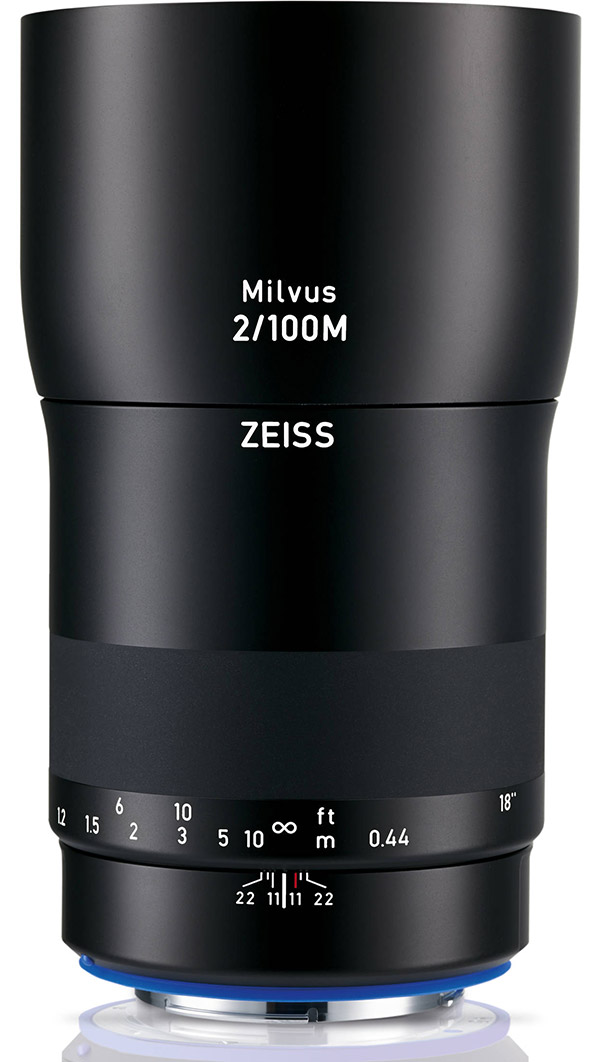
For a but more working distance for your macro subjects, the new Zeiss Milvus 100mm f/2 Macro should fit the bill. Also offering a 1:2 magnification ratio, the Milvus 100mm f/2 Macro features a similar Planar design as its 100mm f/2 predecessor with 9 lens elements in 8 grouping including 2 anomalous partial dispersion elements.
Rounding out the Milvus family are a pair of wide-angle optics, the refreshed 21mm f/2.8 and 35mm f/2 lenses. For the landscape shooter, the 21mm f/2.8 offers an expansive, ultra-wide perspective. The lens remains largely unchanged, optically, to its predecessor. Keeping the same Distagon optical design, the 21mm f/2.8 features 16 lens elements in 13 groupings with four anomalous partial dispersion elements. The size and weight is a bit different from the older model, however, with the Milvus version tipping the scale a bit more (735-851g vs 600-720g), however, the new model maintains the same 82mm filter thread.
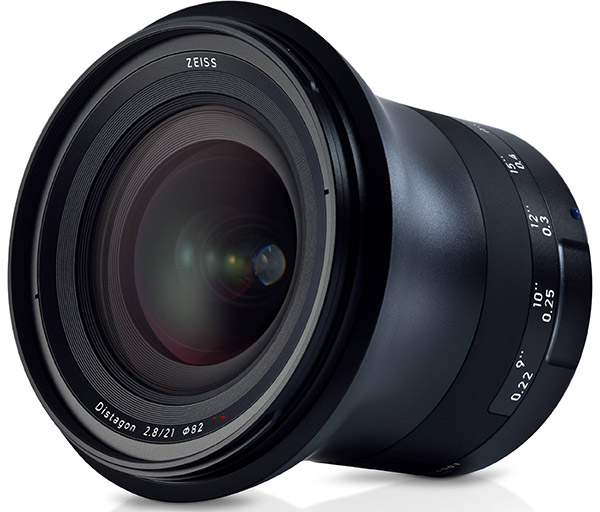
For more general-purpose wide-angle shooting, the Milvus 35mm f/2 again offers a similar Distagon optical design to its predecessor, with 9 elements in 7 grouping, including a single anomalous partial dispersion element. Like we've seen with other Milvus lenses, the new model is a bit heavier than the older model, at 649-702 grams -- depending on mount version -- compared to 530-570g. However, the 35mm f/2 maintains it small 58mm filter thread.
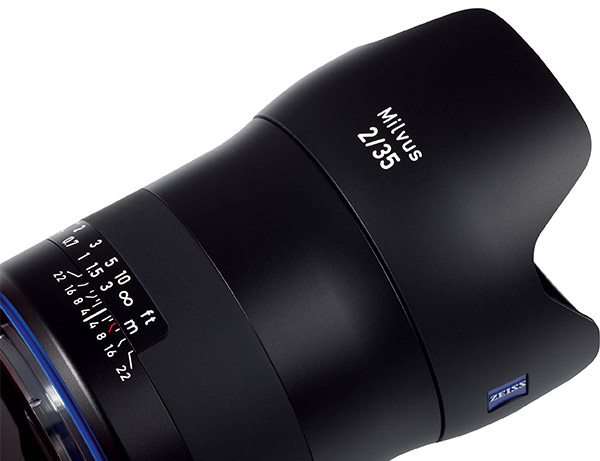
Set to be available in October, the Zeiss Milvus series of lenses are all available for pre-order now. Visit one of our trusted affiliate retailers for information on ordering. Purchasing one of these lenses, or any other product, from one of these retailers helps support the site.
-
Zeiss Milvus 21mm f/2.8, $1,843
-
Zeiss Milvus 35mm f/2, $1,117
-
Zeiss Milvus 50mm f/1.4, $1,199
-
Zeiss Milvus 50mm f/2M, $1,283
-
Zeiss Milvus 85mm f/1.4, $1,799
-
Zeiss Milvus 100mm f/2M, $1,843

